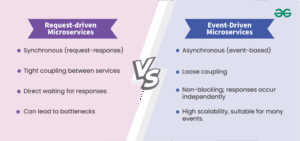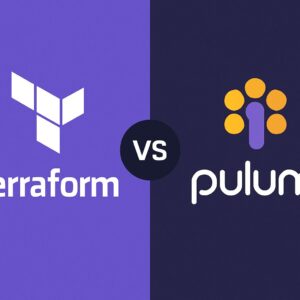In the world of business, finding ways to maximize cost savings is a constant pursuit. When it comes to running software, one avenue is your cloud architecture. By correctly harnessing the power of cloud technology, organizations can achieve cost-effective solutions that not only save money but also enhance efficiency and scalability. In this article, we will explore various considerations for your cloud architecture in order to maximize cost savings. As experts in cloud architecture, SlickFinch is your go-to partner for guidance and assistance in implementing cost-effective solutions tailored to your specific business needs. Feel free to contact us for any further inquiries or support in this area.

Understanding Cloud Architecture
Cloud Architecture refers to the design and structure of a cloud computing system. It encompasses the arrangement and organization of various components such as servers, networks, storage, and software applications in a cloud environment. The goal of cloud architecture is to provide efficient and reliable services to users while optimizing resource utilization and minimizing costs.
Benefits of Proper Cloud Architecture
Cloud architecture offers numerous benefits to organizations of all sizes. First and foremost, it provides scalability, allowing businesses to easily scale their resources up or down based on demand. This flexibility ensures that organizations only pay for the resources they actually need, resulting in cost savings. Additionally, properly defined cloud architecture enables high availability and reliability by distributing resources across multiple data centers, minimizing the risk of downtime. For organizations where their cloud infrastructure has grown organically, or haphazardly, the lack of a coherent architecture almost always results in operational inefficiencies as well as unnecessary costs.
Factors Affecting Cost in Cloud Architecture
Several factors influence the cost of cloud infrastructure. Understanding these factors is essential for optimizing performance and achieving maximum cost savings through your cloud architecture.
Compute Resources
Compute resources include virtual machines, containers, or serverless functions that run applications and process data in the cloud. The cost of compute resources depends on factors such as the type of instances used, the duration of usage, and the processing power required. By right-sizing instances and choosing the most cost-effective options, organizations can optimize compute resource costs.
Storage Requirements
Storage requirements refer to the amount of data stored and accessed in the cloud. The cost of storage is determined by factors such as the type of storage solution used (such as block storage or object storage), the amount of data stored, and the frequency and volume of data access. Efficiently managing storage through techniques like data archiving, compression, and deduplication can significantly reduce storage costs.
Data Transfer Costs
Data transfer costs are incurred when data is moved between different cloud regions or between the cloud and external networks. The cost of data transfer is influenced by factors such as the volume of data transferred, the distance between the source and destination, and the peak usage periods. Employing data transfer optimization techniques, leveraging content delivery networks (CDNs), and implementing cache strategies can help minimize data transfer costs.
Network Infrastructure
The network infrastructure includes the underlying network architecture and components that facilitate communication between cloud resources. The cost of network infrastructure depends on factors such as the bandwidth requirements, the number of network connections, and the usage patterns. Optimizing network traffic, implementing virtual private networks (VPNs), and utilizing direct connect services can help reduce network infrastructure costs.
Data Redundancy and Backup
Data redundancy and backup are crucial for ensuring data availability and protecting against data loss. However, maintaining redundant storage solutions and performing regular backups can add to the overall cost of cloud architecture. By carefully choosing highly available architectures, implementing efficient backup strategies, and leveraging snapshots and replication techniques, organizations can ensure data redundancy and backup while minimizing costs.
Optimizing Compute Resources and Costs
Effectively managing compute resources is vital for minimizing costs in cloud architecture.
Right-sizing Instances
Right-sizing instances involves selecting the appropriate instance type and configuration that aligns with the workload requirements. By accurately matching the resource needs with the available instance options, businesses can avoid overprovisioning and underutilization, optimizing costs.
Auto-Scaling
Auto-scaling allows the automatic adjustment of compute resources based on real-time demand. By dynamically scaling resources up or down, organizations can ensure optimal resource usage while avoiding unnecessary costs during periods of low demand. Using solutions like Kubernetes can take auto scaling to the next level.
Utilization Monitoring
Regularly monitoring resource utilization helps identify idle or underutilized instances. By analyzing utilization patterns and taking appropriate action, such as terminating or resizing instances, businesses can optimize resource utilization and reduce costs.
Reserved Instances
Reserved Instances (RIs) offer discounted pricing for pre-purchased instances with longer-term commitments. By strategically purchasing RIs, organizations can secure significant cost savings, especially for steady-state workloads. Using reserved instances is often one of the areas that organizations overlook when it comes to cost savings.

Efficient Storage Management
Proper storage management is crucial for achieving cost efficiency in cloud architecture. Not just the storage itself, but alos the manner in which data is transferred into and out of the storage.
Choosing the Right Storage Solution
Selecting the appropriate storage solution based on the workload requirements is essential. Organizations should consider factors such as performance, durability, and cost to determine the most suitable storage option, whether it be block storage, object storage, or a combination of both.
Data Archiving and Tiered Storage
Implementing data archiving and tiered storage strategies enables organizations to store infrequently accessed data in a cost-effective manner. By migrating less frequently used data to lower-cost storage tiers, businesses can optimize storage costs while ensuring data availability.
Compression and Deduplication
Data compression and deduplication techniques help reduce storage costs by minimizing the amount of physical storage space required. By compressing data before storage and removing duplicate files, organizations can optimize storage utilization and lower costs.
Backup Strategies
Implementing an efficient and cost-effective backup strategy is essential for data protection. By assessing data retention requirements and utilizing appropriate backup mechanisms, such as incremental backups and leveraging snapshot capabilities, organizations can ensure data backup while minimizing costs.
Reducing Data Transfer Costs
Data transfer costs can be a significant expense in cloud architecture. Implementing strategies to minimize these costs is essential.
Data Transfer Optimization Techniques
Employing data transfer optimization techniques, such as compressing data before transfer and utilizing data compression protocols, can help reduce the volume of data transferred, resulting in lower costs.
Content Delivery Networks (CDNs)
Implementing a content delivery network (CDN) can significantly reduce data transfer costs and improve performance by caching and delivering content from edge servers situated closer to end users. CDNs minimize the need for long-distance data transfers and can help organizations achieve cost-effective content delivery.
Geographic Redundancy
By strategically distributing resources across multiple regions, organizations can minimize data transfer costs between different locations. Geographic redundancy ensures data availability while reducing the need for extensive data transfers. This can be an important consideration when it comes to choosing your cloud provider, as some providers are far more geographically redundant than others.
Cache Strategies
Caching frequently accessed data closer to the users can significantly reduce data transfer costs. Employing caching mechanisms, such as browser caching or content caching at the CDN level, can help minimize data transfer and improve performance.

Optimizing Network Infrastructure
Cost optimization in cloud architecture requires efficient management of the network infrastructure.
Network Traffic Analysis
Regularly analyzing network traffic patterns and monitoring network utilization helps identify potential bottlenecks and areas where optimization can be achieved. By optimizing network traffic, organizations can reduce costs and improve performance.
Network Bandwidth Optimization
Optimizing network bandwidth involves managing and prioritizing network traffic to ensure the most critical applications receive the necessary bandwidth. By implementing intelligent network traffic shaping techniques, businesses can achieve cost-effective network utilization.
Virtual Private Networks (VPNs)
Using virtual private networks (VPNs) can provide secure and cost-effective connectivity between different cloud regions or between the cloud and on-premises infrastructure. VPNs offer encryption, ensuring data security, and can help reduce costs compared to private dedicated connections.
Direct Connect
Direct Connect is a service offered by cloud providers that enables organizations to establish a dedicated network connection between their network and the cloud provider’s data center. By bypassing the public internet, Direct Connect can reduce data transfer costs and improve network performance.
Ensuring Data Redundancy and Backup
Data redundancy and backup are critical considerations for cost optimization in cloud architecture.
Choosing Highly Available Architectures
Designing cloud architectures with high availability in mind ensures data redundancy and minimizes the risk of data loss or service disruptions. By choosing highly available architectures, organizations can maintain data integrity and availability without incurring significant costs.
Redundant Storage Solutions
Implementing redundant storage solutions, such as replicating data across multiple data centers or utilizing distributed file systems, ensures data availability even in the event of hardware failures or disasters. Redundancy adds an extra layer of protection without compromising cost-effectiveness.
Snapshots and Replication
Taking regular snapshots or replicating data to secondary locations enables quick recovery in the event of data loss or corruption. Organizations can optimize costs by strategically defining snapshot schedules and utilizing replication techniques that align with data retention requirements.
Disaster Recovery Planning
Having a comprehensive disaster recovery plan in place is essential for minimizing the impact of unexpected events. By implementing a well-thought-out disaster recovery strategy, including data backup and recovery procedures, organizations can ensure business continuity and data integrity while keeping costs under control.

Leveraging Serverless Architecture
Serverless architecture, also known as Function-as-a-Service (FaaS), offers significant cost-saving opportunities.
Benefits of Serverless Computing
Serverless computing eliminates the need for provisioning and managing servers. With serverless architecture, organizations only pay for the actual execution time of functions, resulting in substantial cost savings.
Cost-effectiveness of Serverless
By leveraging serverless computing, organizations can achieve significant cost savings, especially for low-demand or sporadic workloads. Serverless allows for optimal resource utilization and eliminates the need for paying for idle compute resources.
Microservices and Function-as-a-Service (FaaS)
Serverless architecture encourages a microservices-based approach, where applications are broken down into smaller, independent functions. This modular approach enhances scalability, reduces costs, and improves development and deployment efficiency.
Event-Driven Architecture
Serverless architecture operates on an event-driven model, where functions are triggered by specific events or requests. This event-driven approach optimizes resource usage and ensures that compute resources are only utilized when needed, resulting in cost savings.
Implementing Cost Monitoring and Optimization Tools
To effectively optimize costs in cloud architecture, organizations can leverage various cost monitoring and optimization tools.
Cloud Cost Management Tools
Cloud providers offer a range of cost management tools that enable organizations to monitor and analyze their cloud spending. These tools provide insights into resource usage, cost breakdowns, and recommendations for optimizing costs. Choosing the right tool to suit your cloud architecture can help you save additional spending and will often result in saving you more than the cost of the tool if it’s implemented correctly. A great example of this is using Kubecost on Kubernetes environments.
Resource Tagging and Cost Allocation
Implementing resource tagging and cost allocation practices helps organizations attribute costs to specific projects, departments, or teams. This level of granularity enables better cost tracking and budgeting, allowing businesses to identify areas of overspending and optimize costs accordingly.
Scheduling and Automation
Utilizing scheduling and automation tools allows organizations to automatically start and stop instances based on predefined schedules or triggered events. By optimizing the runtime of instances, businesses can eliminate unnecessary costs incurred by idle resources.
Rightsizing Recommendations
Cloud providers often offer rightsizing recommendations based on resource utilization data. These recommendations help identify instances that are overprovisioned or underutilized, enabling organizations to optimize costs by resizing or reallocating resources accordingly.

Conclusion
Maximizing cost savings with your cloud architecture is crucial for organizations looking to optimize their cloud investments. By understanding the various factors that influence costs and implementing effective strategies, businesses can achieve significant cost reductions while maintaining high performance, reliability, and security.
For expert assistance in maximizing cost savings, optimizing your cloud architecture, or creating an optimized archtiecture from the get-go, you can rely on the expertise of SlickFinch. With our in-depth knowledge and experience, we can provide tailored solutions and guidance to help businesses effectively navigate the complexities of cloud architecture and achieve optimal cost efficiency. Contact us today to unlock the full potential and cost savings of your cloud architecture.




